
For start a little introduction what is Spitsbergen and where to find it.
Spitsbergen is a name of an archipelago, and also a biggest island of this archipelago, located in the Arctic Ocean at the half way from Norway to North Pole. Actually it was its name from 1595, after archipelago was discovered and named by Willem Barentsz, till 1925, when the archipelago got Norwegian sovereignty and name Svalbard. The name Spitsbergen was kept for biggest island. Russian, however, prefer use previous naming.
Here it is on the map, on the right side of Prime Meridian, between 75 and 85 parallels.
Archipelago is huge with ten big islands and plenty of small ones.
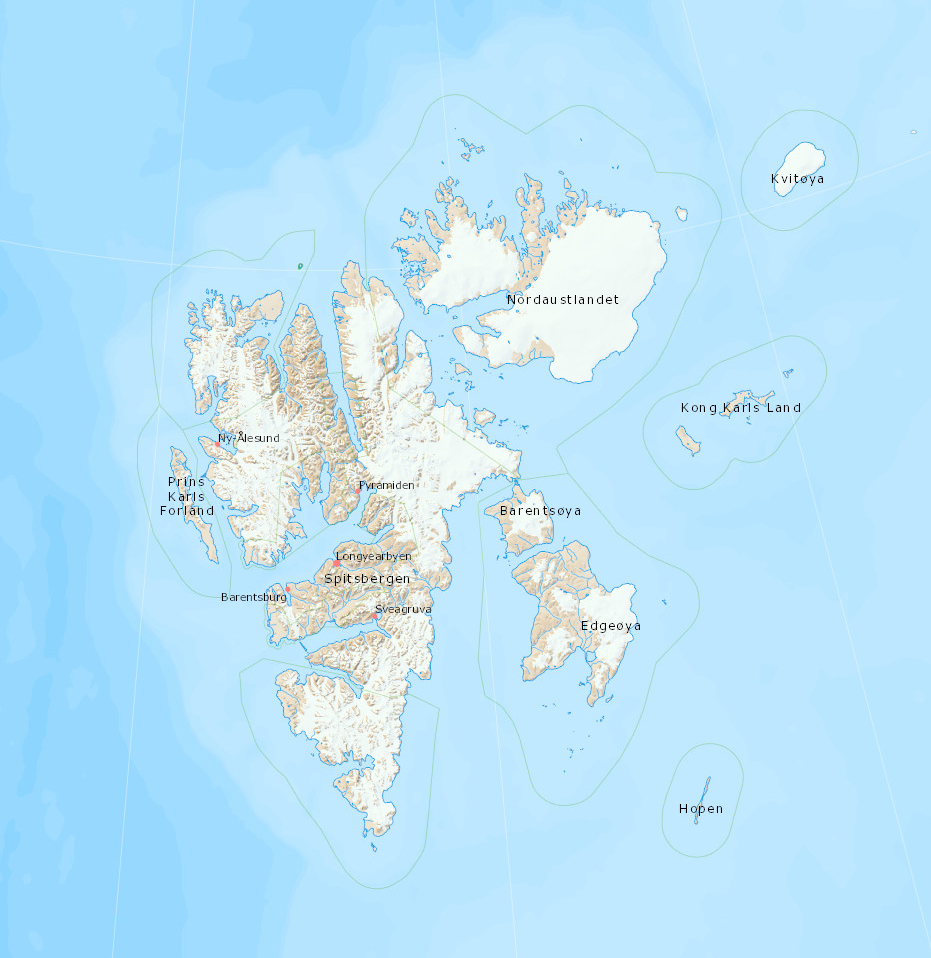
60% of the archipelago is covered with ice, 30% is barren rock, and only 10% has some vegetation. Nice place for life. However, Spitsbergen is inhabited, and not only by polar bears, but also by humans. Most northern permanent human settlements are located on Spitsbergen.
The history of human presence on islands and modern status of Svalbard is quite interesting.
Vikings and Pomors visited the archipelago for seasonal hunting from XII century. Probably they believed that it is eastern part of Greenland.
When Spitsbergen was discovered by Barentsz English, Danish, Dutch, French and later on Russian and Norway companies came to the archipelago. They spent there only summers, for a long time nobody was crazy enough to voluntarily spend winter on Spitsbergen. It was destiny of unfortunate ones whose ships were wrecked.
Coastal waters of the archipelago were in abundance with whales, walruses, seals, and other animals. People came to hunt them. After almost all living things that were big enough to attract hunters were extinguished people found that archipelago has plenty of mineral resources, especially it riches in coal. At the end of XIX century everybody switched from hunting to mining.
In XX century the coal supplies became low. At present time there are only two mining places. Norwegians mine coal in Svea, and Russians in Barentsburg. And Russians do it actually only to hold their economical status on the island, all coal is used for Baretsbusrg itself.
Spitsbergen’s economic now is switched to science and tourism.
The status of Svalbard is quite interesting. Until 1920 it didn’t belong to any country, although many countries had their interests and presence on the islands. Trying to avoid conflicts in 1920 14 countries signed Svalbard treaty. According this treaty sovereignty was granted to Norway, but all signatory countries were granted non-discriminatory rights to fishing, hunting and mineral resources. Many other countries joined the treaty later, and now about 50 of them.
As a result, although Svalbard is mainly under Norwegian low, it has many peculiarities.
For example, Svalbard is visa-free zone. Nobody need visa to visit the archipelago. It is not a part of Schengen Area, although Norway is. However if you don’t have a private plane or a yacht, and you need a visa to visit Norway, you must get Noway transit visa to visit Svalbard, because all commercial flights to Spitsbergen come from Norway.
The taxes are very low, only to support Svalbard and the Svalbard government. As a result the prices are nicely low in contrast to mainland Norway.
Svalbard is partly demilitarized zone, naval bases and fortifications and also the use of Svalbard for war-like purposes is prohibited. However we saw military ship in the port of Longyear.
Among all Treaty countries only Norway and Russia hold active economical presence in the archipelago. There are three Norway and one and half Russian settlements on Spitsbergen. There were three Russian settlements before, but coal supplies become low, and now there are one real settlement, one temporary abandoned, and one completely abandoned.
It was short intro about Spitsbergen.
Why we decided to spend our vacation skiing on Spitsbergen?
First, I don’t like winter, snow and cold.
Second, I am very afraid of polar bears.
Third, “Human was created to live naked in warm climate” (children book about tourism) and I strongly believe that it is true and it is better to live according this statement.
Certainly, I miss some important points, but it is enough to realize that I must visit Spitsbergen.
About some specific equipment and preparations (mainly for myself for memory and improvement).
As a part of our preparation to ski travel I got firearm license and did some practice, because travel outside the town without rifle on Spitsbergen not only non-recommended, but actually prohibited. Walked on Logyear with a rifle on the shoulder I felt as a cowboy movie character who was place in disaster movie by mistake.
Is is all because of polar bears. There are plenty of them on the archipelago. The bear hunting is prohibited on Svalbard, but you allowed to protect your own life. Although if you kill a polar bear to protect you own life you will pay huge fee anyway.
However, the main nasty thing of bear presence is the rifle weight that significantly increased the weight a backpack which is huge enough itself. So, you feel the presence of bears with whole organism even when they are not near you.
A special point of our program was a tent. Unlike me my partner spent a lot of time in arctic travels and had a mature project to make an ideal arctic tent. There are many good tents on the market now but all of them are not perfect for Arctic. Thus, he developed and made it, and we should test it in our travel.
Here the packed tent:
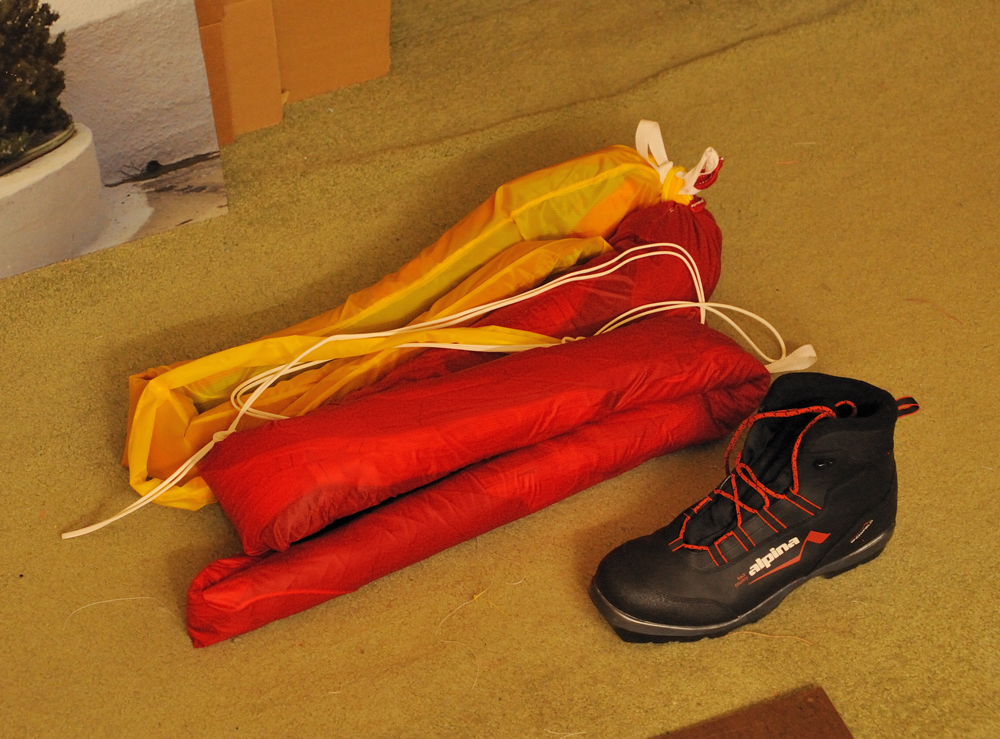
Here the mounted one:
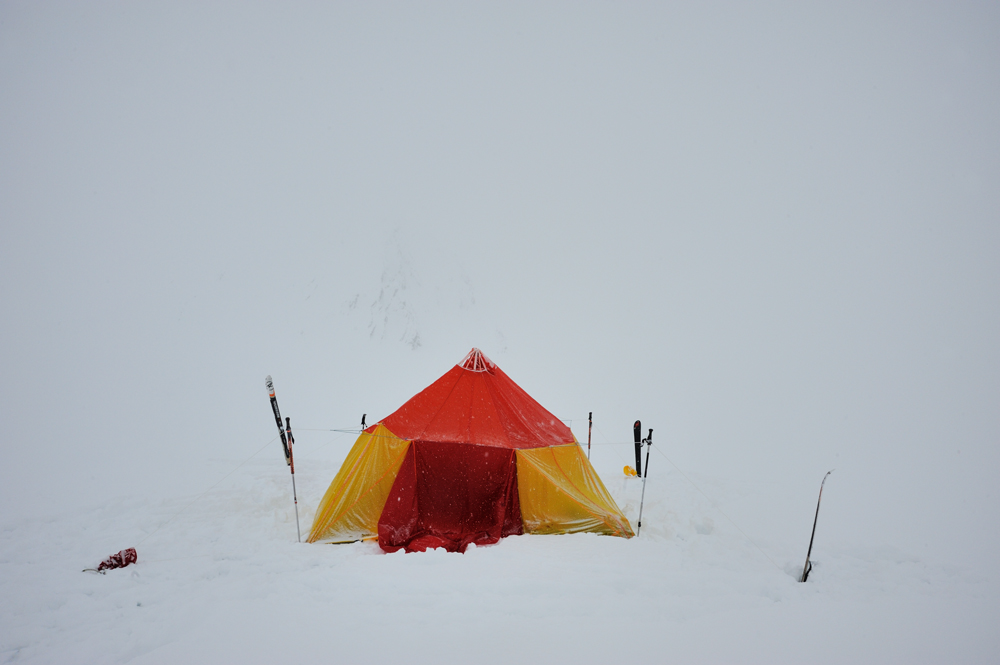
It was not easy to find backcountry skies, bindings and boots. If proper skies and bindings were nor just available in stores in our area (I believe just because AT ski is more popular on West Coast and all outdoor stores full of them), but could be found on-line, boots were real problem. I tried everything that I could find, but they were too cold, or didn’t fit, or had zipper, or everything together. Barely found one model. For additional warming and protection we used boot gloves (they made for alpine ski boots, but can be used if adjust size) and regular alpine gaiters.
The bpptsoots were fine, but below -8C my feet were cold and I should used chemical warmers. Well, my feet and hands more sensitive to cold than most people’s ones, but still -8C is not so low temperature. I believe winter ski boot must work at such temperature even for me…
Important note for future: skins must be nailed to ski at home! We used up a whole roll of duck-tape constantly fixing them.
Another equipment that is specific for long ski trips is sledges. In theory they should easy up the weight carrying. It is true, pulling 40-kg sledge is much easier then carrying 40-kg backpack. We used small sledges and divided our weight between sledges and backpacks. However, the theory and the practice are two different thing. Our sledges made all possible things to make our life more interesting and complicated. Especially they liked descents and traverses. They moved in any unpredictable directions, pulled and pushed us, turned theiself upside down, and so on. The sledges definitely require rework.
And last, but not the least, the food.
We used typical diet for long arctic trip. For 24 days. We planned 21-day trip, so some food for reserve.
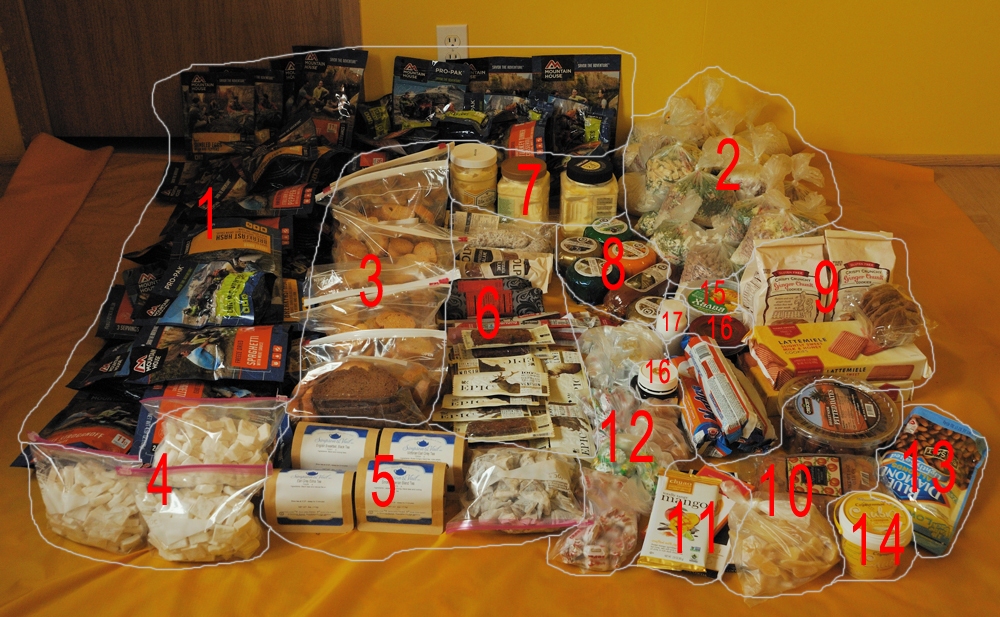
1-freeze-dry food
2-freeze-dry that me made our-self from ready component
3-croutons
4-sugar
5-tea
6-cured meat
7-butter
8-cheese
9-cookies
10-dry fruits
11-chocolate
12-candy
13-nuts
14-condensed milk
15-halva
16-honey
17-salt
Packed. 32 кг (with package).
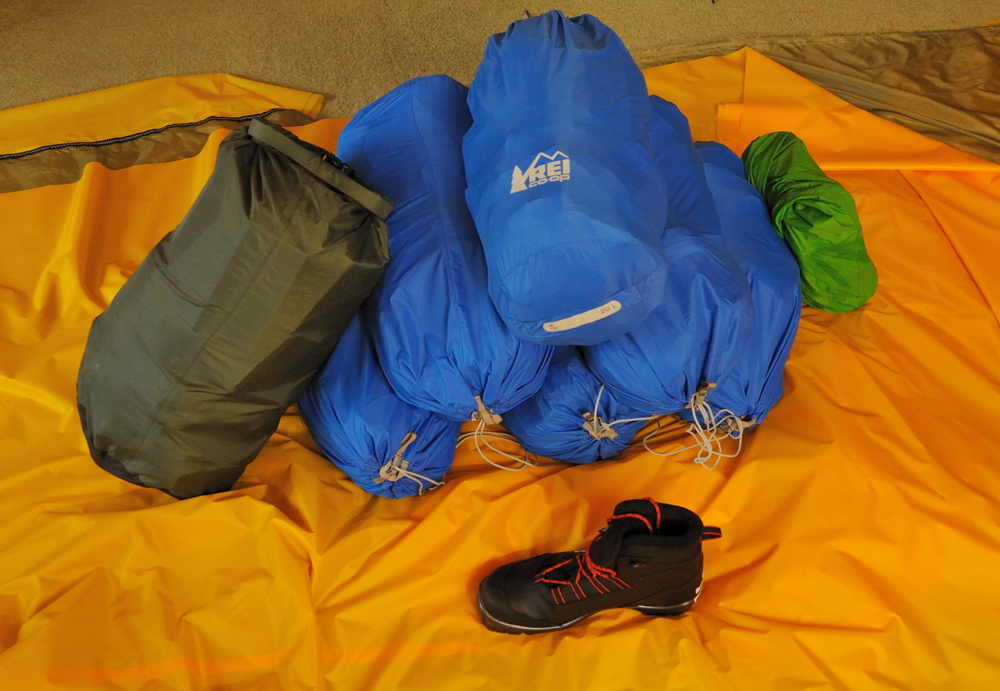
It was much food, much too mach.
We defensively overestimate ourself. For three weeks we ate less the a half, some thing we even didn’t touch at all. Should have it in mind for the next trip.
And couple words about backpacks. They were bought before Aconcagua trip, but still worth to mention in the case if somebody has the same problems with backpacks as me. I tried to find big (more than 100 liters) and light backpack. it is a real challenge. They are more rare than flying pigs.
However finally we found one! From 105 to 115 liter (depend on size), light, and waterproof. Not perfect, but close enough.
To be continue…